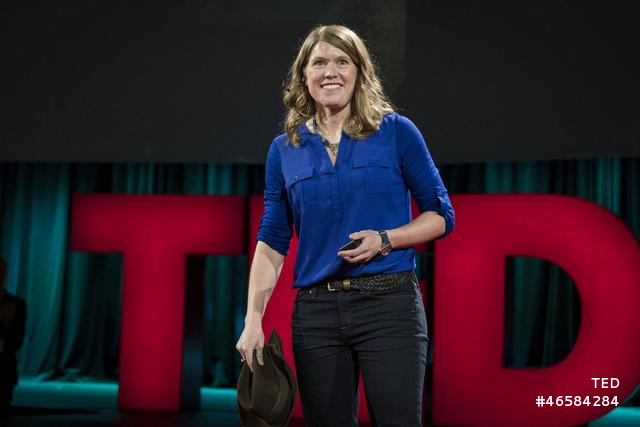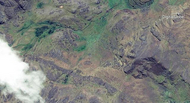Discovering our Common Humanity through Space Archaeology
Posted on Categories Discover Magazine

Like many people, I was first introduced to the world of archaeology by Indiana Jones, that adventuresome character who lit up the big screen rescuing artifacts from villains by the skin of his teeth.
Indy was awesome and will always have a place in my heart. But while he succeeded in making archaeology seem romantic, I never understood why it was important or believed I could join the adventure until I was introduced (via the small screen) to a real life archaeologist named Sarah Parcak.
Parcak is a space archaeologist. She is one of about 200 archaeologists around the world who use satellite imagery to locate evidence of the civilizations that came before us.
Recently she launched Global XPlorer, a citizen science project that promises to democratize the field of archaeology while dramatically increasing the number of archaeological sites that can be found in less time.
This is important because we are running out of time. Economic hardship and political unrest have led to an exponential increase in the looting of archaeological artifacts across the globe. If we lose these hidden treasures we risk losing historical knowledge, beautiful artwork, and something more, Parcak says—an opportunity to realize our “common humanity.”
“The most important thing we do as archaeologists is acknowledge that past people existed and lived lives worth learning about,” Parcak says in a TED Talk earlier this year. “Can you even imagine what the world would be like today if we acknowledged all human beings in this way?”
It is her vision that archaeology can grow the world’s empathy by inviting everyday people to take part that makes Parcak’s project exciting to me.
SPACE ARCHAEOLOGY ON THE SMALL SCREEN
Parcak first learned to love digging for treasures by digging for sand dollars as a child in Bangor, Maine. Later she earned a B.A. in Egyptology and Archaeology at Yale and an M.Phil. and Ph.D. at Cambridge.
Sarah Parcak enters the TED2016 stage with her Indiana Jones style hat. Credit: Bret Hartman/TED
I first learned about her recently when I watched a TED Talk online that she’d delivered in 2012. In it she explained how space archaeologists use satellite imagery and infrared light to highlight chemical changes to the landscape caused by the buildings and activities of the ancient Egyptians.
She shared how her team used this technology to discover the lost city of Itjtawy, which was Egypt’s capitol during the civilization’s Renaissance period, and proposed that the lessons of Itijawy’s resilience in the face of political and environmental strife could teach us how to face the challenges we face today.
Parcak became a TED Fellow in 2014, and two years later she won the TED Prize, a $1 million award given each year to a visionary leader to help them spark global change. Parcak used the money to launch Global XPlorer, and explained the program in several TED talks in 2016 and this year.
GLOBAL XPLORER
Global XPlorer uses a website to engage citizen scientists in analyzing satellite images of Earth to spot looting and locate possible new archaeological sites. The images, which are provided by Digital Globe, are divided into individual sections called “tiles” that display around 20 X 20 meters of the earth’s surface.

The “Explore” screen on the GlobalXplorer platform. DigitalGlobe has provided 200,000 square kilometers of satellite imagery of Peru, broken into tiles about the size of a few city blocks. Design by Mondo Robot
Citizen scientists create a free account on the website and take a quick tutorial to learn techniques such as how to differentiate pits, bulldozer tracks, and other signs of looting from trees, houses, and normal human activity. Once they’ve completed the tutorial, they spend as much time as they want online viewing the tiles and reporting what they observe. Other volunteers also view the same tiles to improve the quality of the data.
The data are shared with archaeologists and local authorities who use them to protect the sites from looting. They are not shared with the general public, though, in order to protect the location of possible sites from looters. Once new sites have been protected, archaeologists will share their successes with citizen scientists through Periscope, Google plus, and other social media.
The first “expedition” is in Peru. In addition to searching satellite images, visitors to the website can learn about the history of Peru through archival photos and documentary film provided by National Geographic.
So far, almost 60,000 citizen scientists have participated, exploring more than 12 million satellite images and identifying more than 29,000 potential archaeological sites and features. The Global Xplorer team still needs scouts for the Peru expedition and also plans to start a new expedition soon.
RACING AGAINST TIME
Their efforts couldn’t come at a better time. Archaeologists are just beginning to scratch the surface of what there is left to find across the globe. For instance, Parcak estimates that in Egypt alone we’ve only found one thousandth of one percent of the number of archaeology sites that wait below the surface to be discovered.
Unfortunately, looting of archaeological sites is increasing rapidly, outpacing the ability of professional archeologists to find and protect them. On any given day more than 10,000 looted artifacts are for sale in the global market and at the pace looting is going, all of Egypt’s sites will be affected by looting by 2040, Parcak says.
To better understand the causes of this increase, Parcak and her team looked at open source data to map looting activities at over 200,000 looting pits. They found that looting started to sharply increase during the 2009 global recession, indicating that it is fundamentally an economic issue.
In addition, there are two types of looters: criminal elements like ISIS that use the money to fund terrorism, and impoverished local people who loot in order to feed their families.
INVERTING THE PYRAMIDS

A small stone structure nestled in a small clearing near Peru’s Sacred Valley. ©DigitalGlobe 2016
The solution, Parcak believes, is to “invert the pyramids” by opening archaeology to everyday people through technology, crowdsourcing, and citizen science. By democratizing archaeology beyond just the wealthy or academia, and increasing the numbers of people who are searching, Global Xplorer can tip the balance toward preservation.
“Inverting the pyramids” also means empowering the impoverished communities that often live next to archaeological sites. Global Explorer is partnering with a sustainable preservation group that works on the ground to transform local communities with business opportunities and education that connects them with the cultural heritage being excavated near their homes.
Lastly, “inverting the pyramids” means using this new army of space archaeologists to explore not only the lives of those who lived in pyramids and palaces, but the lives of those who lived in cities and villages as well.
By acknowledging that this past is worth saving it means that we are worth saving, too, Parcak says.
Racing against criminals and battling poverty to unleash shared humanity and save the world—that sounds like just the kind of adventure our hero Indiana would have loved.
Want more citizen science? Check out SciStarter’s Project Finder! With 1100+ citizen science projects spanning every field of research, task and age group, there’s something for everyone!